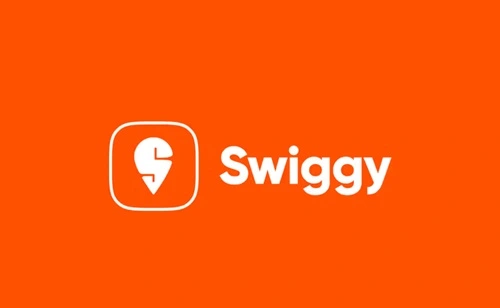Swiggy, founded in 2014 by Sriharsha Majety, Nandan Reddy, and Rahul Jaimini, has quickly grown into India’s leading food delivery service. Known for its quick delivery, diverse restaurant partnerships, and user-friendly app, Swiggy has revolutionized how Indians order food. Swiggy’s success is further driven by its expansion into groceries, quick commerce, and the development of its cloud kitchen network. However, the food delivery industry in India is both competitive and evolving rapidly, with economic, regulatory, and consumer behavior shifts presenting both opportunities and challenges. This SWOT (Strengths, Weaknesses, Opportunities, Threats) analysis explores Swiggy’s current position and future outlook in the ever-evolving Indian market.

Strengths
1. Strong Brand Recognition and Market Leadership:
Swiggy is one of the most recognized food delivery brands in India, known for its convenience, reliability, and efficient service. Its early entry into the market and rapid expansion helped it gain substantial market share and build a loyal customer base. Today, Swiggy’s brand recognition gives it an edge over new entrants and contributes to high consumer trust and recall.
2. Extensive Network of Restaurant Partnerships:
Swiggy boasts a wide network of restaurant partnerships, ranging from popular local eateries to premium restaurants and international chains. This variety allows Swiggy to cater to a diverse audience with various culinary preferences. By maintaining these partnerships and constantly expanding its offerings, Swiggy has managed to keep users engaged and loyal, setting it apart from competitors.
3. Efficient Logistics and Quick Delivery Model:
Swiggy’s strong logistics network and efficient delivery model are key to its competitive advantage. With a large fleet of delivery partners and advanced technology, Swiggy is known for its quick delivery, often within 30 minutes. Its “Swiggy Genie” and “Instamart” services further leverage this delivery network for quick grocery and essentials delivery, broadening Swiggy’s reach beyond just food delivery.
4. Diversified Offerings and Quick Commerce:
Swiggy has diversified its offerings, entering the quick commerce space with Instamart, which delivers groceries and household essentials in under an hour. This diversification helps Swiggy capture additional market segments and boosts revenue streams beyond food delivery. By offering services like Swiggy Genie, a last-mile delivery service, and expanding into cloud kitchens with Swiggy Access, the company has effectively positioned itself as a versatile platform catering to various consumer needs.
Weaknesses
1. High Dependence on Urban Markets:
Swiggy’s primary customer base is concentrated in metropolitan cities and Tier 1 urban areas, where disposable incomes are higher and food delivery culture is well-established. However, this urban focus limits Swiggy’s reach, as a significant portion of India’s population resides in Tier 2, Tier 3, and rural areas, where food delivery is still a luxury. Expanding to these regions may require significant investments and adaptations to Swiggy’s pricing and delivery model.
2. High Cash Burn and Profitability Challenges:
Like many food delivery platforms, Swiggy faces challenges in achieving profitability due to high operational costs, including delivery partner wages, marketing, and discounts. The food delivery business is highly competitive and often requires significant discounts and incentives to retain users, impacting Swiggy’s margins. Despite raising substantial funding, Swiggy has yet to achieve sustainable profitability, which is a critical concern for long-term growth.
3. Dependency on Discounts and Customer Retention Costs:
Swiggy relies heavily on promotional discounts, cashback offers, and loyalty programs to attract and retain customers. While these strategies drive engagement, they also create dependency on discounts, making it challenging to maintain profitability. Additionally, frequent discounts may create price-sensitive customers who switch to competitors based on deals, impacting Swiggy’s ability to build long-term customer loyalty.
4. Regulatory and Compliance Challenges:
Operating in the food delivery space involves compliance with food safety, labor, and tax regulations, which add complexity and cost to Swiggy’s operations. Swiggy has to adhere to multiple regulations, including food safety standards, delivery partner labor rights, and GST collection, which can impact its operational efficiency. Regulatory changes or increased scrutiny on the gig economy can further add to Swiggy’s compliance costs and disrupt operations.
Opportunities
1. Expansion into Tier 2 and Tier 3 Cities:
As digital adoption and disposable incomes increase in Tier 2 and Tier 3 cities, demand for food delivery is also on the rise in these areas. By expanding its reach to smaller cities, Swiggy has an opportunity to tap into an underserved market with significant growth potential. Tailoring its pricing and service models to suit these regions could help Swiggy increase its customer base and drive growth.
2. Growth in Quick Commerce and Grocery Delivery:
The quick commerce segment is growing rapidly in India, with consumers seeking fast delivery of groceries and essentials. Swiggy Instamart’s quick commerce model is well-positioned to capture this demand, providing Swiggy with an additional revenue stream. By enhancing its grocery delivery service, Swiggy can attract more frequent purchases and increase customer engagement, driving higher revenue.
3. Leveraging Data Analytics for Personalization:
Swiggy collects a wealth of data on consumer preferences, purchasing patterns, and delivery times. By leveraging data analytics, Swiggy can personalize the customer experience, offering tailored recommendations, promotions, and meal options. This personalization can enhance user experience, improve customer retention, and increase average order values, thereby boosting revenue.
4. Expansion into Cloud Kitchens and Virtual Brands:
The cloud kitchen model, where food is prepared in delivery-only kitchens, offers a cost-effective way for Swiggy to expand its food offerings without traditional restaurant overheads. Swiggy’s “Access” program, which provides space and infrastructure to restaurant partners, allows it to operate virtual brands and curate niche food options based on local demand. This expansion into cloud kitchens offers Swiggy a scalable model with the potential for high margins.
Threats
1. Intense Competition from Zomato and New Entrants:
Swiggy faces stiff competition from Zomato, its primary rival in India’s food delivery market. Both companies engage in aggressive pricing and discounting strategies to attract customers, leading to price wars that can erode margins. Additionally, new entrants and international players like Amazon are also exploring food delivery in India, increasing competition and adding pressure on Swiggy to maintain its market share.
2. Regulatory Risks and Labor Issues:
Swiggy’s business model relies on gig workers, which exposes it to potential regulatory risks as governments consider new labor laws to protect gig economy workers. Any adverse regulation related to gig workers’ rights, such as minimum wage mandates, benefits, or insurance requirements, could increase Swiggy’s operating costs. Additionally, any incidents or controversies involving delivery partners could harm Swiggy’s brand image.
3. Economic Slowdowns and Reduced Consumer Spending:
Swiggy’s services, particularly food delivery, are discretionary expenses, making it vulnerable to economic slowdowns or changes in consumer spending habits. During periods of economic uncertainty, consumers may cut back on ordering food, which can directly impact Swiggy’s revenue. Inflationary pressures that raise food and delivery costs may also force Swiggy to increase prices, potentially affecting demand.
4. Rising Fuel Prices and Operational Costs:
The rising cost of fuel has a direct impact on Swiggy’s delivery expenses, as higher fuel costs increase the operational expenses associated with last-mile delivery. Swiggy may be forced to either absorb these costs, impacting margins, or pass them on to customers, which could lead to reduced demand. Managing these cost pressures is essential for Swiggy’s financial sustainability, especially as delivery volumes continue to grow.
Future Outlook
Swiggy’s future in India’s food delivery market looks promising, albeit challenging. With India’s growing urban population, increasing disposable incomes, and a shift in lifestyle preferences, the demand for convenience services like food and grocery delivery is expected to rise. Swiggy’s leadership position, established brand, and expanding services provide a strong foundation for growth.
To sustain its competitive edge, Swiggy must focus on expanding its reach in Tier 2 and Tier 3 cities. By adapting its pricing model and offering localized options, Swiggy can tap into a vast and relatively untapped market with immense growth potential. Additionally, strengthening its quick commerce services through Instamart and expanding cloud kitchens can diversify its revenue streams, reducing reliance on food delivery alone.
However, achieving long-term profitability will require Swiggy to address its high cash burn rate. The company must strike a balance between discount-driven growth and sustainable customer acquisition strategies. Reducing dependency on discounts and optimizing operational efficiency, particularly through data-driven delivery optimizations, can help improve margins and achieve greater financial stability.
Moreover, managing regulatory challenges and labor issues will be critical as Swiggy navigates the evolving gig economy landscape. Proactively addressing labor concerns, ensuring fair practices, and investing in delivery partner welfare can strengthen Swiggy’s brand reputation and enhance operational resilience.
Investing in data analytics and AI to personalize offerings and optimize delivery routes can also enhance customer satisfaction and reduce delivery times, helping Swiggy stand out in a crowded market. Additionally, expanding its eco-friendly initiatives and sustainable packaging can align Swiggy with growing consumer demand for responsible business practices.
In conclusion, Swiggy’s strengths in brand recognition, efficient logistics, and diversified offerings provide a strong base for growth. By leveraging opportunities in quick commerce, data analytics, and Tier 2 and Tier 3 cities, Swiggy can strengthen its leadership in India’s dynamic food and grocery delivery market. With a focus on operational efficiency, customer experience, and adaptability to market trends, Swiggy is well-positioned to remain a key player in India’s rapidly evolving delivery landscape.

